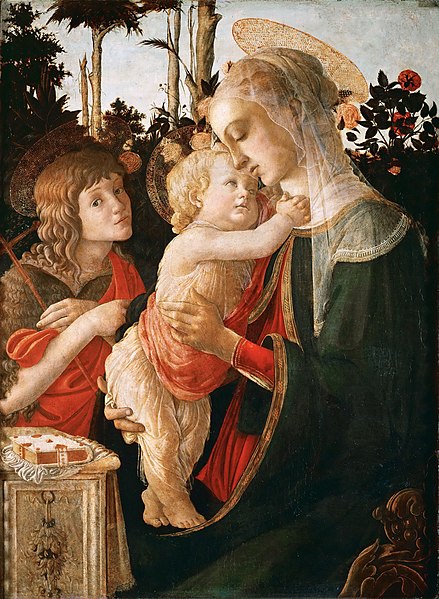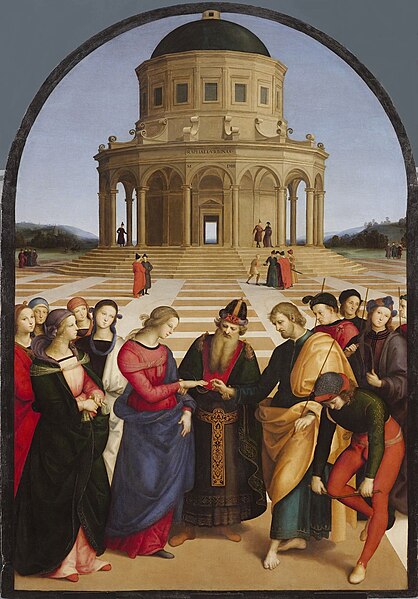Alessandro di Mariano di Vanni Filipepi, better known as Sandro Botticelli or simply Botticelli, was an Italian painter of the Early Renaissance. Botticelli's posthumous reputation suffered until the late 19th century, when he was rediscovered by the Pre-Raphaelites who stimulated a reappraisal of his work. Since then, his paintings have been seen to represent the linear grace of late Italian Gothic and some Early Renaissance painting, even though they date from the latter half of the Italian Renaissance period.
Probable self-portrait of Botticelli, in his Adoration of the Magi (1475).
Detail from Botticelli's most famous work, The Birth of Venus (c. 1484–1486)
Via Borgo Ognissanti in 2008, with the eponymous church halfway down on the right. Like the street, it has had a Baroque makeover since Botticelli's time.
Madonna and Child with St. John the Baptist, c. 1470–1475, Louvre
Italian Renaissance painting
Italian Renaissance painting is the painting of the period beginning in the late 13th century and flourishing from the early 15th to late 16th centuries, occurring in the Italian Peninsula, which was at that time divided into many political states, some independent but others controlled by external powers. The painters of Renaissance Italy, although often attached to particular courts and with loyalties to particular towns, nonetheless wandered the length and breadth of Italy, often occupying a diplomatic status and disseminating artistic and philosophical ideas.
Raphael: The Betrothal of the Virgin (1504), Pinacoteca di Brea, Milan.
Sandro Botticelli: The Birth of Venus for the Medici (1484–1485), Uffizi, Florence
Domenico Ghirlandaio, The Birth of the Virgin Mary, shows the introduction of patron's families into religious cycles.
Paolo Uccello, The Battle of San Romano, demonstrates the preoccupation with the development of linear perspective, in a secular subject








